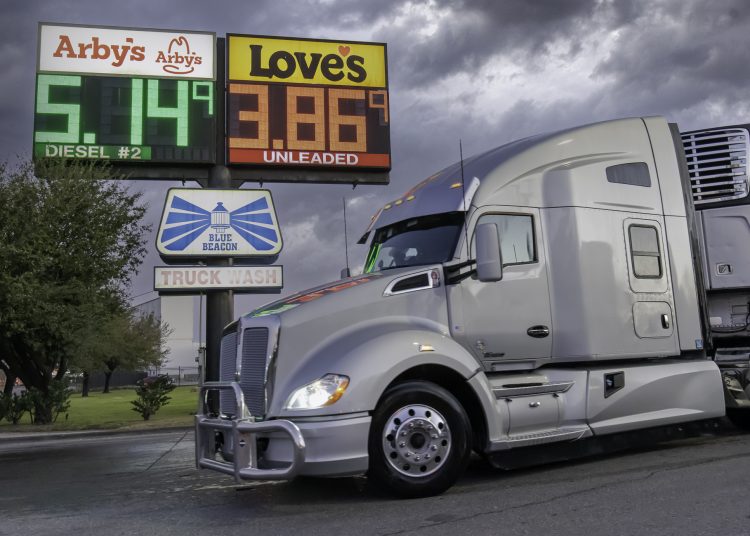The cost of fuel has compounded margin erosion on the trucking spot market
Chart of the Week: National Truckload Index (Linehaul Only), National Trucking Index, Diesel Truck Stop Price per gallon – USA SONAR: NTIL.USA, NTI.USA, DTS.USA
Truckload spot rates for dry van freight (NTI) have plummeted 18% since the start of the year, but if you remove fuel (NTIL), it nearly doubles to 32%.
From an annualized perspective, those numbers moderate to -7% and -22%, respectively, but are still impressive nonetheless. The big takeaway from all this is that carriers that rely on spot market freight have seen their margins erode faster than the rates alone imply.
This week’s chart illustrates how fuel costs (DTS) have seemingly not had much influence on keeping market rates afloat.
Normally, spot rates and cost inflation move in a similar direction as they are inherently connected. This is an extremely rare occurrence when operating costs are moving in polar opposition to the market rate. So what are the implications?
The truckload spot market has four primary functions for shippers:
- To find capacity when contracted carriers are unable to provide it.
- To cover a purely transactional move that occurs too inconsistently to have a contracted rate.
- To get service outside of a normal expectation — i.e., expedited.
- To get capacity covered at a discount to the contracted rate.
Finding capacity outside of the contracted provider has been the main driver of spot market activity over the past…



























































